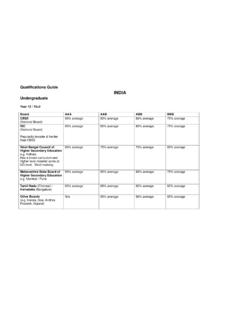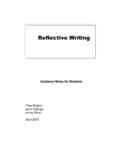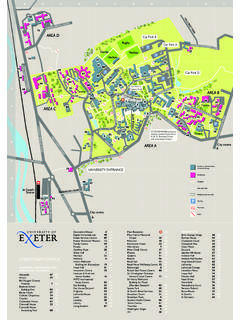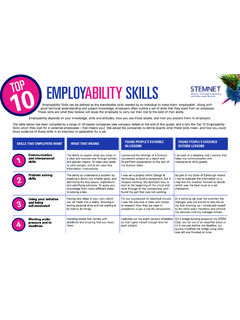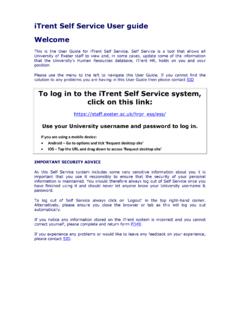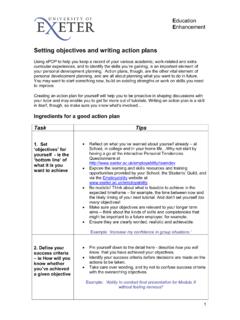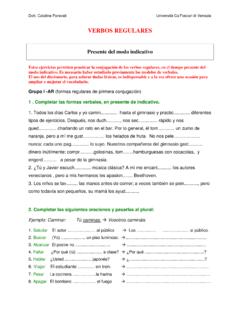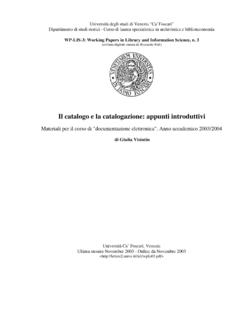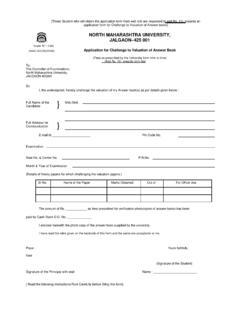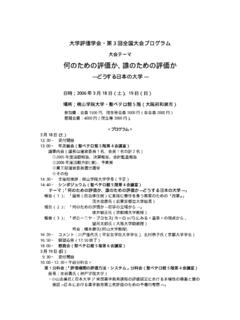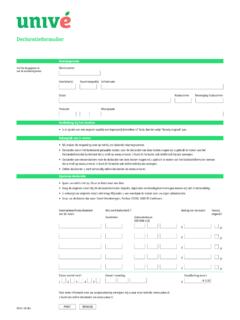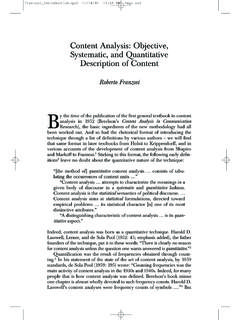Transcription of The Change Curve - University of Exeter
1 PDP Toolkit Change Management prepare for Change Knowing The Change CurveThe Change CurveThe Change Curve is based on a model originally developed in the 1960s by Elisabeth Kubler-Ross to explain the grieving process. Since then it has beenwidely utilised as a method of helping people understand their reactions to significant Change or proposed that a terminally ill patient would progress through five stages of grief when informed of their illness. She further proposed that thismodel could be applied to any dramatic life changing situation and, by the 1980s, the Change Curve was a firm fixture in Change management circles.
2 Thecurve, and its associated emotions, can be used to predict how performance is likely to be affected by the announcement and subsequent implementation of asignificant Change Curve The original five stages of grief denial, anger, bargaining, depression and acceptance have adapted over the years. There are numerous versions of thecurve in existence. However, the majority of them are consistent in their use of the following basic emotions, which are often grouped into three distincttransitional 1 Shock and denialThe first reaction to Change is usually shock.
3 This initial shock, while frequently short lived, can result in a temporary slow down and loss of tends to dip sharply, individuals who are normally clear and decisive seek more guidance and reassurance, and agreed deadlines can be shock is often due to:lack of informationfear of the unknownfear of looking stupid or doing something wrongAfter the initial shock has passed, it is common for individuals to experience denial. At this point focus tends to remain in the past. There s likely to be a feelingthat as everything was OK as it was, why does there need to be a Change ?
4 Common feelings include:being comfortable with the status quofeeling threatenedfear of failureIndividuals who have not previously experienced major Change can be particularly affected by this first stage. It is common for people to convince themselvesthat the Change isn t actually going to happen, or if it does, that it won t affect them. Performance often returns to the levels seen before the dip experiencedduring the initial shock of the Change . People carry on as they always have and may deny having received communication about the changes, and may wellmake excuses to avoid taking part in forward this stage, communication is key.
5 Reiterating what the actual Change is, the effects it may have, and providing as much reassurance as possible, will all helpto support individuals experiencing these 2 Anger and depressionAfter the feelings of shock and denial, anger is often the next stage. A scapegoat, in the shape of an organisation, group or individual, is commonly the blame on someone or something allows a continuation of the denial by providing another focus for the fears and anxieties the potential impact iscausing. Common feelings include:causing.
6 Common feelings include:suspicionscepticismfrustrationTh e lowest point of the Curve comes when the anger begins to wear off and the realisation that the Change is genuine hits. It is common for morale to be low,and for self-doubt and anxiety levels to peak. Feelings during this stage can be hard to express, and depression is possible as the impact of what has been lostis acknowledged. This period can be associated with:apathyisolationremotenessAt this point performance is at its lowest. There is a tendency to fixate on small issues or problems, often to the detriment of day to day tasks.
7 Individuals maycontinue to perform tasks in the same way as before, even if this is no longer appropriate will be reassured by the knowledge that others are experiencing the same feelings. Providing managers, teams and individuals with information aboutthe Change Curve underlines that the emotions are usual and shared, and this can help to develop a more stable platform from which to move into the 3 Acceptance and integrationAfter the darker emotions of the second stage, a more optimistic and enthusiastic mood begins to emerge.
8 Individuals accept that Change is inevitable, andbegin to work with the changes rather than against them. Now come thoughts of:exciting new opportunitiesrelief that the Change has been survivedimpatience for the Change to be completeThe final steps involve integration. The focus is firmly on the future and there is a sense that real progress can now be made. By the time everyone reachesthis stage, the changed situation has firmly replaced the original and becomes the new reality. The primary feelings now include:acceptancehopetrustDuring the early part of this stage, energy and productivity remain low, but slowly begin to show signs of recovery.
9 Everyone will have lots of questions and becurious about possibilities and opportunities. Normal topics of conversation resume, and a wry humour is often used when referring to behaviour earlier in will respond well to being given specific tasks or responsibilities, however communication remains key. Regular progress reports and praise help tocement the more buoyant mood. It is not uncommon for there to be a return to an earlier stage if the level of support suddenly reactionsEach person reacts individually to Change , and not all will experience every phase.
10 Some people may spend a lot of time in stages 1 and 2, whilst others whoare more accustomed to Change may move fairly swiftly into stage it is generally acknowledged that moving from stage 1 through stage 2 and finally to stage 3 is most common, there is no right or wrong people going through the same Change at the same time are likely to travel at their own speed, and will reach each stage at different Change Curve is a very useful tool when managing individual or team Change . Knowing where an individual is on the Curve will help when deciding on howand when to communicate information, what level of support someone requires, and when best to implement final changes.
